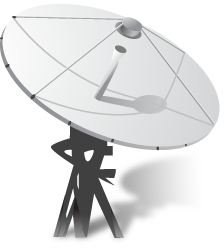Understanding the AFSCN: Air Force Satellite Control Network
AFSCN
The acronym AFSCN stands for the Air Force Satellite Control Network. It is a series of connected control nodes, communication links and ground stations that act as an entire network used by the Department of Defense and other organizations related to national security and space exploration to manage different space programs. This network is continuously operational and it spans the entire world. This intricate network is also used for programs of other countries allied with the US. These programs include weather forecasting. The Air Force Space and Missile Systems Center is responsible for the management of the network’s development, maintenance and acquisition of assets.
The Function
The AFSCN provides tracking, telemetry and commanding capabilities to various programs and missions. This location service is provided by transmitting location information via ground stations and satellites. Missions to space and other aeronautical tasks benefit from the information provided through this network, which means the stability of all of its parts is very important. Most of this information is time sensitive, so it is also of great importance to have everything working perfectly at all times.
The Network
The exact components of the AFSCN are 2 control nodes located in Colorado and California, 8 geographically dispersed ground stations, 15 antennas and several satellites. They are all connected by a vast wide area network. The ground stations control and operate the various satellites that gather and transmit data while the control nodes relay information and manages all resources needed for the network to function smoothly.
Ground Stations
The ground stations have several electronic equipment that includes several antennas that range from 10 to 60 meters. Different ground stations follow an integrated set of data formats, wave forms and power requirements. Standardization is always preferred to ensure compatibility across all ground stations and for more reliable information to be managed by the control nodes.
Control Nodes
The control nodes are responsible for managing the entire network, ensuring clear and precise communication between all of its components. The main control node is located in Colorado Springs Colorado while the secondary node is in Sunnyvale California. Some users of the network only use one of these nodes while others use both to achieve redundancy and ensure precise and reliable communication of pertinent data across the global network.
Common Uses of the AFSCN
The AFSCN is commonly used by vehicles that go to space for a variety of reasons like suborbital flights, limited ballistic flights and space program tasks. Satellite maintenance and launches are missions that use critical information from the AFSCN for safe and secure missions. Low altitude satellites are the ones that use data from the AFSCN the most, requiring data and communication transmissions on a frequent basis.
Due to its global reach, the AFSCN has many assets. Some of them are stationary and provide continuous and dedicated support for critical systems and missions like military and space programs, while other assets are transportable and can be deployed to specific locations wherever and whenever they are needed.
References:
https://www.aero.org/publications/crosslink/spring2006/02.html
https://www.responsivespace.com/Papers/RS6/SESSIONS/SESSION%20I/1006_HODGES/1006P.pdf
https://www.au.af.mil/au/awc/awcgate/au-18/au18004a.htm
Photo Courtesy of Wikimedia Commons / Supplied by DevCom
